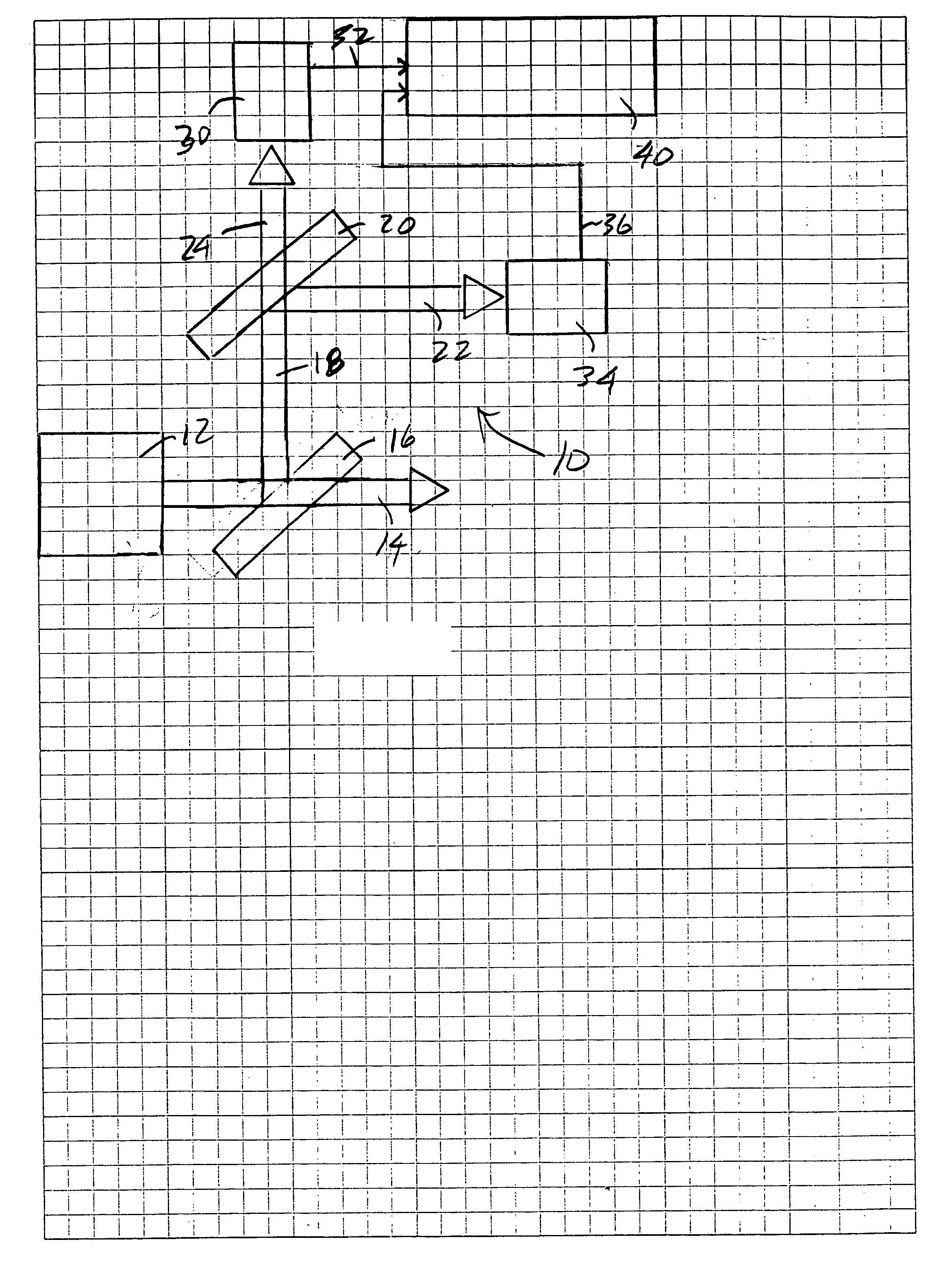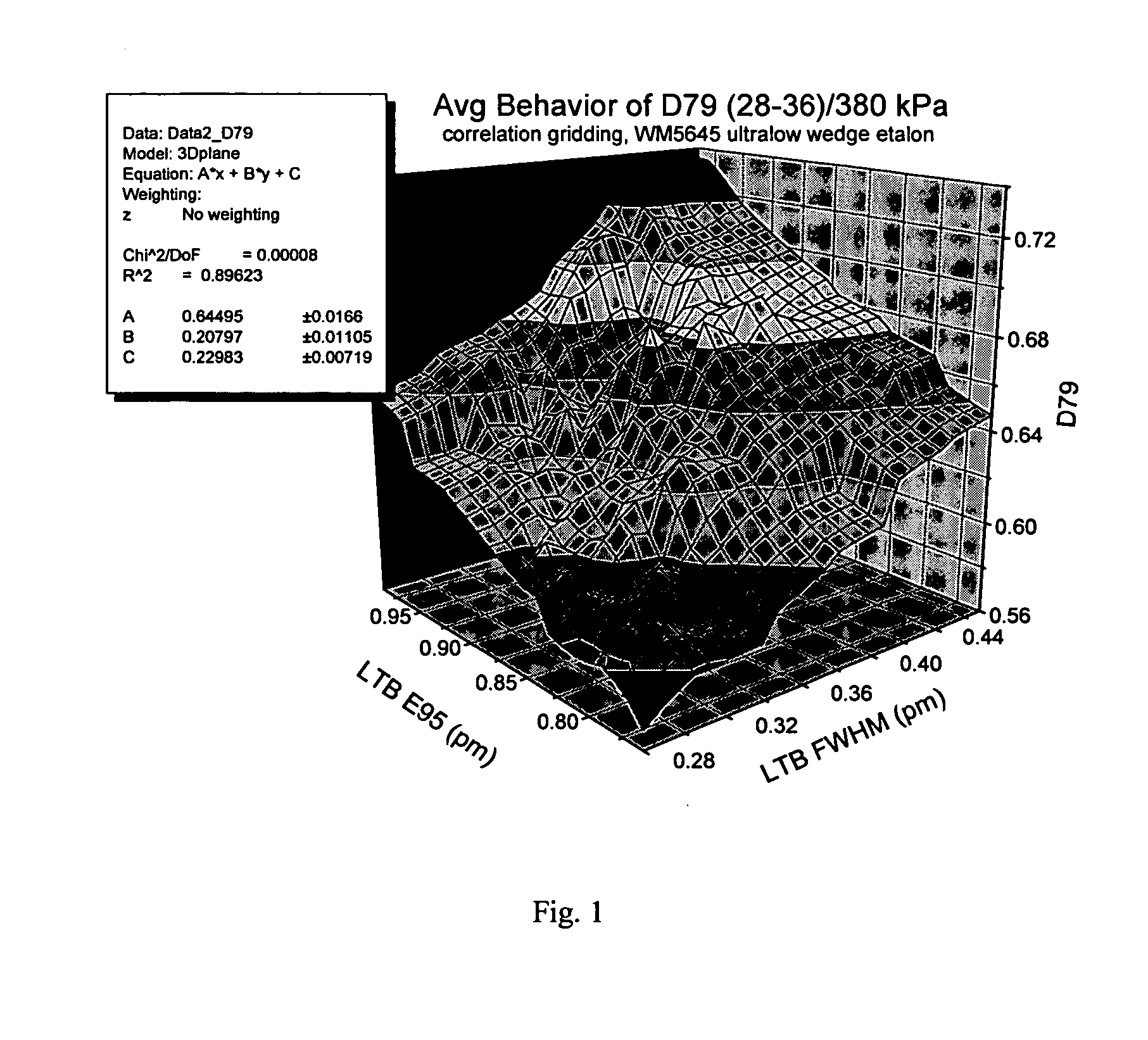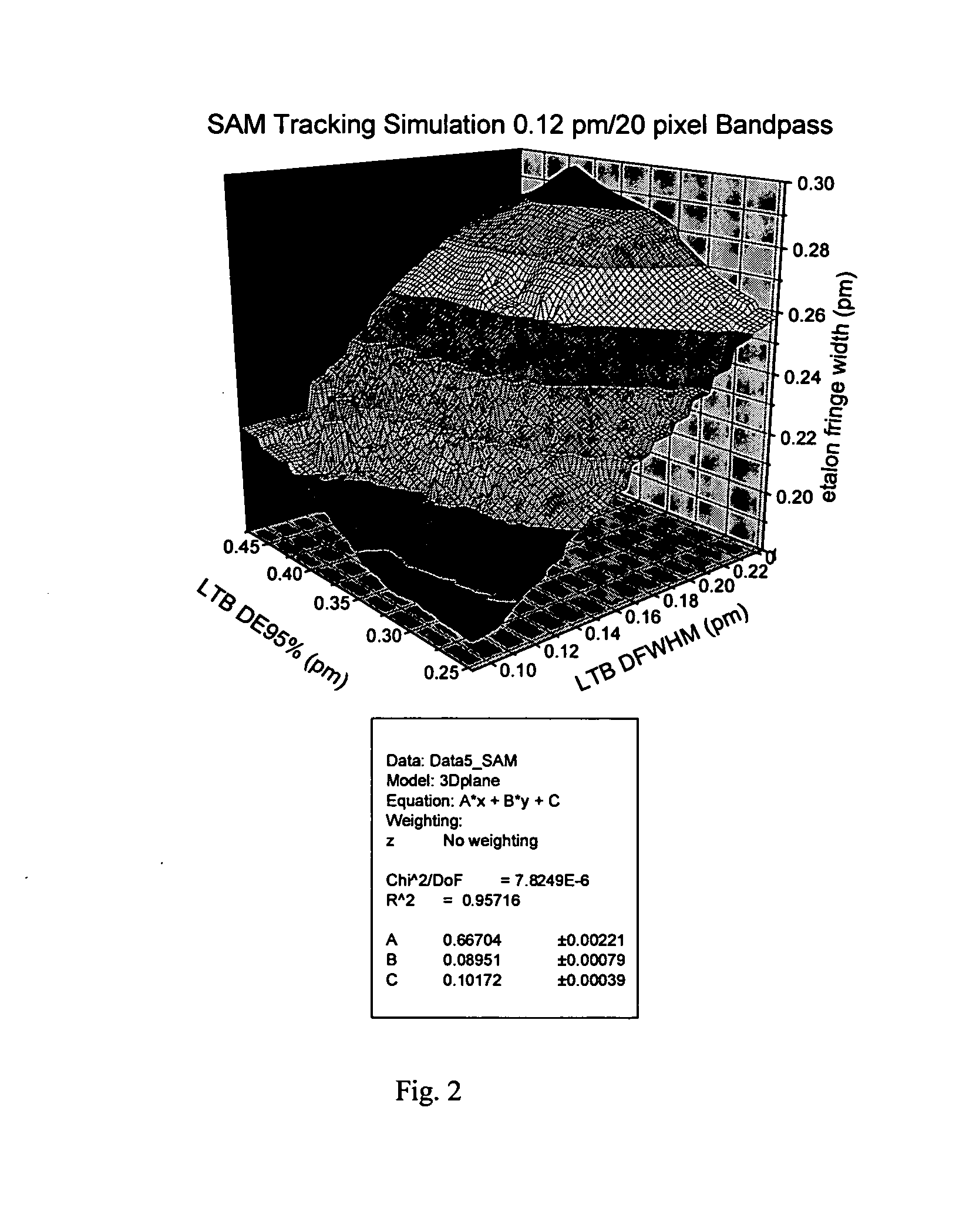Optical bandwidth meter for laser light
- Summary
- Abstract
- Description
- Claims
- Application Information
AI Technical Summary
Benefits of technology
Problems solved by technology
Method used
Image
Examples
Embodiment Construction
Turning now to FIG. 1 three is shown a three-dimensional plot of the response of a bandwidth meter employing, e.g., an etalon spectrometer, e.g., an etalon manufactured by Coherent, Inc., as the values of FWHM and E95 are varied as measured utilizing a very accurate spectrometer, e.g., a grating spectrometer, e.g. ELIAS-I as manufactured by Laser Technik Berlin (“LTB”).
It can bee seen that the etalon spectrometer response is comparably influenced by changes in both E95 and to FWHM of the source (a line-narrowed discharge-pumped excimer laser) over the operating range. All units are in pico-meters. A least-squares fit to a plane model of the data yields the approximation (etalon fringe width)=A*(source FWHM)+B*(source E95)+C with A=0.64495±0.0166, and B=0.20797±0.01105 and C=0.22983±0.00719. In the prior art this response has been modeled in a simpler form, in some cases where A is set identically equal to one and B is set identically equal to zero, and all of the modeling is done...
PUM
 Login to View More
Login to View More Abstract
Description
Claims
Application Information
 Login to View More
Login to View More - R&D
- Intellectual Property
- Life Sciences
- Materials
- Tech Scout
- Unparalleled Data Quality
- Higher Quality Content
- 60% Fewer Hallucinations
Browse by: Latest US Patents, China's latest patents, Technical Efficacy Thesaurus, Application Domain, Technology Topic, Popular Technical Reports.
© 2025 PatSnap. All rights reserved.Legal|Privacy policy|Modern Slavery Act Transparency Statement|Sitemap|About US| Contact US: help@patsnap.com



